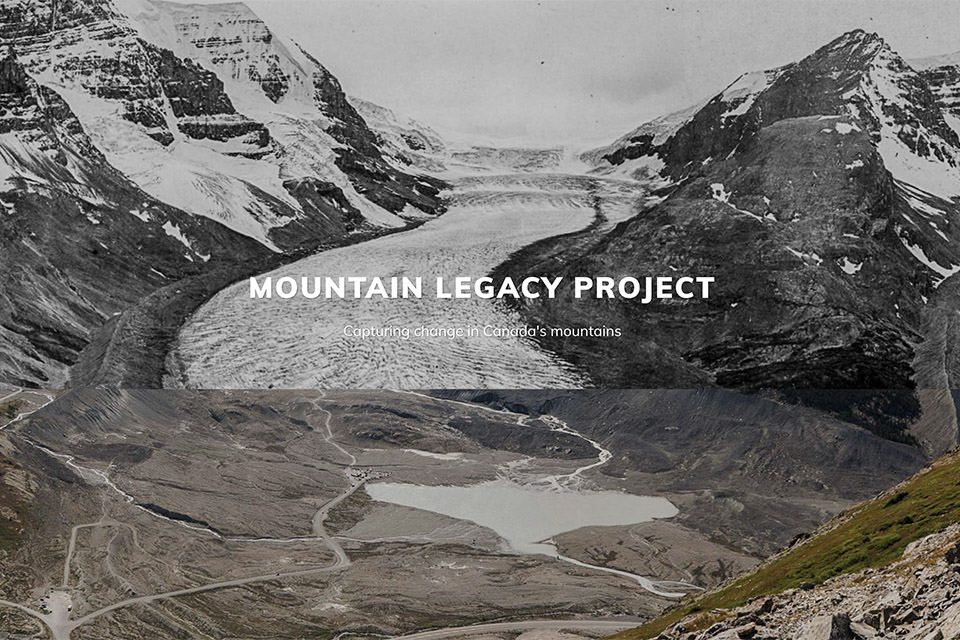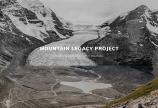150 years of mountain photos show dramatic change to landscapes

Researchers from the University of Victoria’s Mountain Legacy Project are raising the alarm about the impact of climate change on the mountain landscapes of western Canada by using repeat photography and an astonishing array of photographs—historical and recent—in one of the largest projects of its kind anywhere.
The team has documented 150 years of ecological and cultural change by recapturing historical photos first taken by dozens of intrepid mountain surveyors from 1861 to 1958. By bringing modern camera equipment deep into the back country, the team captured fresh images of the same mountain vistas in exactly the same locations as the original photos, and then compared the results.
“We now have more than 7,000 repeat pairs of images gathered over 19 summers working with graduate and undergraduate students,” says UVic environmental scientist Eric Higgs, who leads the project. “People can clearly see the significant changes brought about by a shifting climate, human activity and development, and ecological processes.”
The project’s new map-based tool (explore.mountainlegacy.ca) features side-by-side image comparisons and the ability to zoom into any of the thousands of images presently online. The historical images are housed at Library and Archives Canada in Gatineau, Quebec and the BC Archives at the Royal British Columbia Museum in Victoria, and constitute the largest systematic collection of mountain photographs in the world.
People can clearly see the significant changes brought about by a shifting climate, human activity and development, and ecological processes.
—Eric Higgs, UVic environmental scientist
The team uses archival research, image interpretation and analysis, as well as software development to make the paired images widely available to ecologists, managers, researchers, historians, mountaineers, environmentalists, students and anyone else interested in this project.
Originally based at the University of Alberta (1998-2001), it quickly grew beyond the Rocky Mountains and became the Mountain Legacy Project shortly after it moved to UVic’s School of Environmental Studies in 2002 with the appointment of Higgs as director of the school (2002 to 2010).
Mary Sanseverino, a keen mountaineer, photographer and computer science instructor now retired from UVic, has been involved in the project since 2011. “The importance of the work is, to my mind, in the name of the project,” adds Sanseverino. “We make use of the important photographic legacy left to Canada by the early surveyors. We walk in their footsteps, stand where they stood, repeat their images and, through our research, pay their legacy forward to the future.”
Working with long-running partner Library and Archives Canada, UVic Libraries and the Canadian Mountain Network, which is hosted at the University of Alberta, Higgs and his team are exploring ways of expanding the scope and potential of the project to inform effective sustainable management, conservation and restoration of the fragile and changing mountain landscapes.
Monday is International Mountain Day, designated by the UN, with this year’s theme of “Mountains under Pressure: climate, hunger, migration.”
Funding was provided for the project from a variety of sources, including the Social Sciences and Humanities Research Council and the Ministry of Agriculture and Forestry in Alberta.
A press kit containing high-resolution photos is available on Dropbox.
-- 30 --
Photos
Media contacts
Dr. Eric Higgs (School of Environmental Science) at ehiggs@uvic.ca
Mary Sanseverino (Teaching Professor Emerita, Dept. of Computer Science) at msanseve@uvic.ca
Anne MacLaurin (Social Sciences Communications) at 250-217-4259 or sosccomm@uvic.ca
Tara Sharpe (University Communications + Marketing) at 250-721-6248 or tksharpe@uvic.ca

